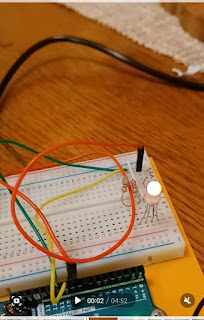A Delve Into Blogging
As I take this new venture into blogging, I would like to first explain my understanding of what a blog is: a somewhat informal manner of relating one's experience and thoughts while building a community of people and creating a space of learning for both the blogger and the readers. I've had some experience using the websites Weebly and Wix, and although there were many similarities in the choice of templates, fonts, and themes, the inclusion of images in those blog hosting sites gave me some frustration, Weebly was not as user friendly as this blogger site because the interface did not have the same features as Microsoft Word or Google Docs (at least in the templates) and I didn't have as much control as I wanted. I feel that a website built specifically for blogs (Blogger) would be more user friendly as I gain experience with it. I used royalty free images from Pixabay.com and will continue to experiment with design options as I post.
One of the advantages that a blog affords to the author, as well as the readers, is the opportunity to explore thoughts, recount experiences, and analyze new learning in a deeper and more thorough medium. Discussion boards, vlog comments, and many other forms of technological communication have the unspoken expectation to keep thoughts and comments to the shortest, most succinct length as possible. Respect is given in those mediums to individuals who can say the most with the fewest words, with brief, funny observations often getting the most likes. Blogs, however, do not have to bend to that more modern expectation, but instead are expected to explore concepts in a deep and sometimes wordy journey for the author and the readers, allowing for a thorough reflection and investigation of topics of common interest. Blogs help to blend the traditional enjoyment of reading and writing with the modern advantages of worldwide communication and community creation. Although, at first glance, using blogging in the classroom might be considered at a simple "substitution" (from the SAMR model) for a normal writing exercise, it can be moved to the "modification" or even "redefinition" model if the instructor helps facilitate the growth of a community between the students and other members of the school or other schools. The blog could expand beyond a typical writing assignment, allowing students to get feedback from others, question themselves to write more in depth reflection of their perspective, and build an ongoing discussion through comments and subsequent blog posts.
One way I would like to explore blog use as a teacher, is to focus on the content students are researching or the reading they are responding to. My third grade students who are researching a science article, could post their findings in a blog. Third graders (or any grade) who are responding to a book they've been assigned could summarize their thoughts in a blog. This could give my students experience in article writing, as well as motivate them to put more effort to a publicly posted blog that many others will have access to. We could share our blog with other classes and teachers, the principal, as well as their parents and guardians! The writing part would meet the substitution level of the SAMR model, with the typing and formatting skills fulfilling the augmentation level. Involving other members of the school and community could help elevate the blog to the modification level. Posting videos on the blog, featuring presentations and projects the students have learned, and involving schools from the district could even push the block to the redefinition stage.
Using blogging in the classroom also supports the pedagogy of learner-centered inquiry and instruction as researched by Dr. Maryellen Weimer and Dr. Phyllis Blumberg. Students are encourage to take ownership of their own learning and the task of blog writing will become more meaningful to students than a teacher directed activity. Students will gain writing and technology skills they will be able to use the rest of their lives, creating novel, effective and whole, (Mishra & Koehler), authentic products (the blog). Students will realize the practical and creative benefits of authoring a blog.
The technology of blogging supports my content related goals and personal pedagogy as an educator because it allows students to collect their thoughts and explain them in a more relaxed setting without the pressure of quickly and eloquently summarizing thinking in a group or presenting them verbally in front of a whole class. Students could also be encouraged to question themselves and be metacognitive by the expectation that a blog is meant to be a reflective tool. Students would have helpful access to research resources to include quotations and images and students would take more ownership of their learning by interacting with the community of their peers. Students could also learn technology design and benefit from the affordances a blog design offers.
One obstacle of using blogs is that deadlines would have to be implemented in some form in order for students to effectively interact with each others' blogs. This could cause some students to rush and not enjoy the process of experimentation as much, but extra time or support could be administered to those students to help them with that obstacle. Another obstacle is consistency. Blogging is meant to be an ongoing exercise, and for it to be effective in helping students develop their technology and writing skills, as well as build community, it cannot be abandoned after the first successful post or two. It will be more effective if it is made a regular habit in this classroom throughout the school year. But if these supports are implemented to counteract the disadvantages, the benefits will outweigh the pitfalls. I look forward to learning more as I continue this blog!






Comments
Post a Comment